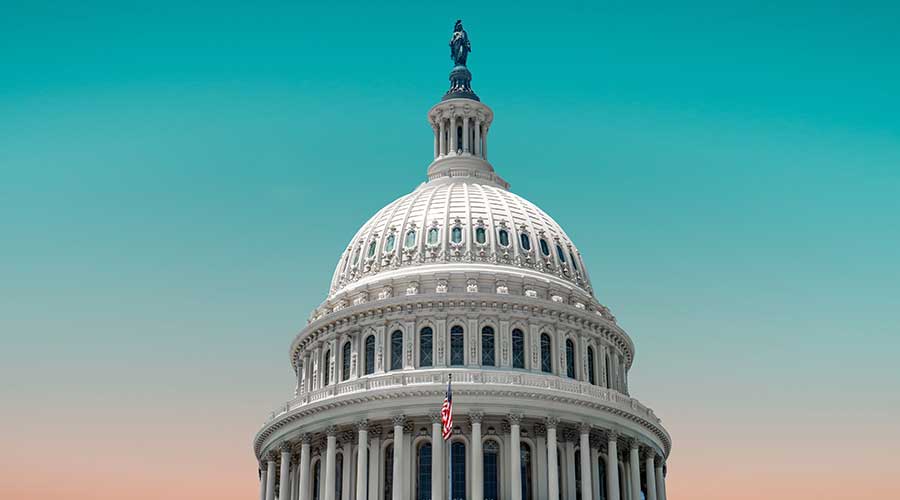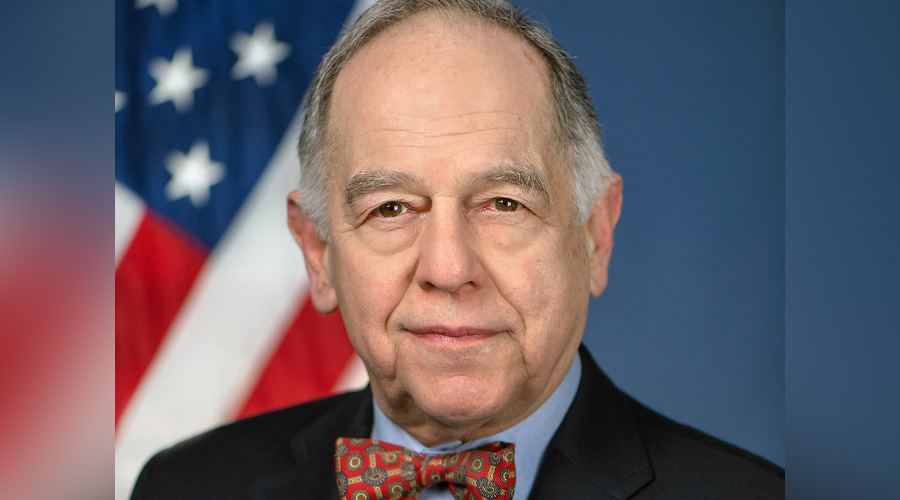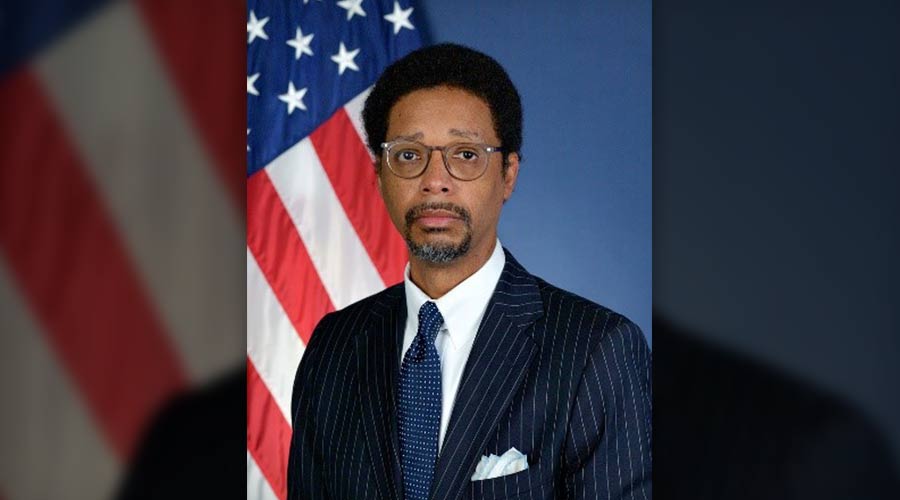Newsletter Sign Up
Stay updated on news, articles and information for the rail industry
Stay updated on news, articles and information for the rail industry
RAIL EMPLOYMENT & NOTICES
Rail News Home Short Lines & Regionals
Rail News: Short Lines & Regionals
May 2007
Rail News: Short Lines & Regionals
Railroads seek congressional backing for two tax-credit bills
advertisement
Railroads aren’t doing enough to improve their infrastructure’s condition, which rates a C-minus grade, Surface Transportation Board Vice Chairman Douglas Buttrey said at an April 11 board hearing on freight-rail capacity.
It isn’t because railroads aren’t willing to invest in infrastructure improvements, countered Association of American Railroads (AAR) President and Chief Executive Officer Edward Hamberger during his testimony. During the past four years, the Class Is’ capital spending has increased about 60 percent. And railroads would invest more if federal policymakers introduce tax incentives for rail infrastructure projects, said Hamberger.
They did, and soon after the hearing. On April 17, Sens. Trent Lott (R-Miss.) and Kent Conrad (D-N.D.) introduced legislation that would provide a tax credit for investments in new rail infrastructure. In addition, another federal bill that proposes to extend and enhance existing tax credits for short-line infrastructure upgrades continued to gather supporters on Capitol Hill last month.
Getting their act together
Lott and Conrad introduced the Freight Rail Infrastructure Capacity Expansion Act (S. 1125), which proposes to provide a 25 percent tax credit for capital expenditures made by railroads, shippers, ports, trucking companies and other transportation businesses to build or expand track, facilities or other rail infrastructure, or to acquire certain locomotives.
“If the bill moves forward, infrastructure investments will be made at a more rapid pace than today,” said BNSF Railway Co. Executive Vice President and Chief Marketing Officer John Lanigan April 23 at the American Short Line and Regional Railroad Association’s (ASLRRA) annual meeting.
In July 2006, Lott introduced a similar bill, but the measure died in last year’s Congress. S. 1125 has a better chance of passing because the measure isn’t being introduced late in the congressional session and has more supporters, including new backers Chevron Phillips Chemical, the National Retail Federation and Foundation Coal, according to the AAR’s legislative department.
“Sen. Lott has talked about including S. 1125 in the aviation trust fund reauthorization bill, and there are several other tax vehicles that may present opportunities for passage this year,” AAR officials said in a statement.
Meanwhile, the Short Line Railroad Investment Act of 2007 (H.R. 1584/S. 881) continued to garner supporters. As of April 21, the bills attracted 24 co-sponsors in the House and six in the Senate.
Introduced in March, the legislation would extend the tax credit law three years to 2010’s end; minimize the Alternative Minimum Tax’s impact on credits; provide eligibility for short lines created in 2005 and 2006; and increase the mileage-based credit limitation from $3,500 to $4,500.
Wanted: more supporters
By July 1, ASLRRA lobbyists want to land a total of 200 co-sponsors — an imposing challenge given the many new faces in Washington, D.C., said Adam Nordstrom, a partner in lobbying firm Chambers, Conlon & Hartwell L.L.C., at the ASLRRA’s annual conference in Baltimore.
“In the last two election cycles, we lost a lot of co-sponsors,” he said.
Many of those politicians in 2005 helped pass the Railroad Track Maintenance Credit (Section 45G of the U.S. tax code). The law enables regionals and short lines to earn 50 cents in tax credits for every dollar spent on qualified infrastructure improvements.
In January 2005, the ASLRRA estimated $168 million worth of infrastructure investments would qualify for the tax credits.
Although a regional or short line could qualify for a tax credit under S. 1125, such as by funding the cost to build a lead track into a new ethanol plant, H.R. 1584/S. 881 is crucial for small railroads that typically upgrade infrastructure, said Nordstrom.
“If we don’t work hard to extend the tax credits, it’ll be a $168 million blow to the short-line industry,” he said.
It isn’t because railroads aren’t willing to invest in infrastructure improvements, countered Association of American Railroads (AAR) President and Chief Executive Officer Edward Hamberger during his testimony. During the past four years, the Class Is’ capital spending has increased about 60 percent. And railroads would invest more if federal policymakers introduce tax incentives for rail infrastructure projects, said Hamberger.
They did, and soon after the hearing. On April 17, Sens. Trent Lott (R-Miss.) and Kent Conrad (D-N.D.) introduced legislation that would provide a tax credit for investments in new rail infrastructure. In addition, another federal bill that proposes to extend and enhance existing tax credits for short-line infrastructure upgrades continued to gather supporters on Capitol Hill last month.
Getting their act together
Lott and Conrad introduced the Freight Rail Infrastructure Capacity Expansion Act (S. 1125), which proposes to provide a 25 percent tax credit for capital expenditures made by railroads, shippers, ports, trucking companies and other transportation businesses to build or expand track, facilities or other rail infrastructure, or to acquire certain locomotives.
“If the bill moves forward, infrastructure investments will be made at a more rapid pace than today,” said BNSF Railway Co. Executive Vice President and Chief Marketing Officer John Lanigan April 23 at the American Short Line and Regional Railroad Association’s (ASLRRA) annual meeting.
In July 2006, Lott introduced a similar bill, but the measure died in last year’s Congress. S. 1125 has a better chance of passing because the measure isn’t being introduced late in the congressional session and has more supporters, including new backers Chevron Phillips Chemical, the National Retail Federation and Foundation Coal, according to the AAR’s legislative department.
“Sen. Lott has talked about including S. 1125 in the aviation trust fund reauthorization bill, and there are several other tax vehicles that may present opportunities for passage this year,” AAR officials said in a statement.
Meanwhile, the Short Line Railroad Investment Act of 2007 (H.R. 1584/S. 881) continued to garner supporters. As of April 21, the bills attracted 24 co-sponsors in the House and six in the Senate.
Introduced in March, the legislation would extend the tax credit law three years to 2010’s end; minimize the Alternative Minimum Tax’s impact on credits; provide eligibility for short lines created in 2005 and 2006; and increase the mileage-based credit limitation from $3,500 to $4,500.
Wanted: more supporters
By July 1, ASLRRA lobbyists want to land a total of 200 co-sponsors — an imposing challenge given the many new faces in Washington, D.C., said Adam Nordstrom, a partner in lobbying firm Chambers, Conlon & Hartwell L.L.C., at the ASLRRA’s annual conference in Baltimore.
“In the last two election cycles, we lost a lot of co-sponsors,” he said.
Many of those politicians in 2005 helped pass the Railroad Track Maintenance Credit (Section 45G of the U.S. tax code). The law enables regionals and short lines to earn 50 cents in tax credits for every dollar spent on qualified infrastructure improvements.
In January 2005, the ASLRRA estimated $168 million worth of infrastructure investments would qualify for the tax credits.
Although a regional or short line could qualify for a tax credit under S. 1125, such as by funding the cost to build a lead track into a new ethanol plant, H.R. 1584/S. 881 is crucial for small railroads that typically upgrade infrastructure, said Nordstrom.
“If we don’t work hard to extend the tax credits, it’ll be a $168 million blow to the short-line industry,” he said.
— Jeff Stagl


 2025 MOW Spending Report: Passenger-rail programs
2025 MOW Spending Report: Passenger-rail programs
 Gardner steps down as Amtrak CEO
Gardner steps down as Amtrak CEO
 Guest comment: Oliver Wyman’s David Hunt
Guest comment: Oliver Wyman’s David Hunt
 Women of Influence in Rail eBook
Women of Influence in Rail eBook
 railPrime
railPrime







